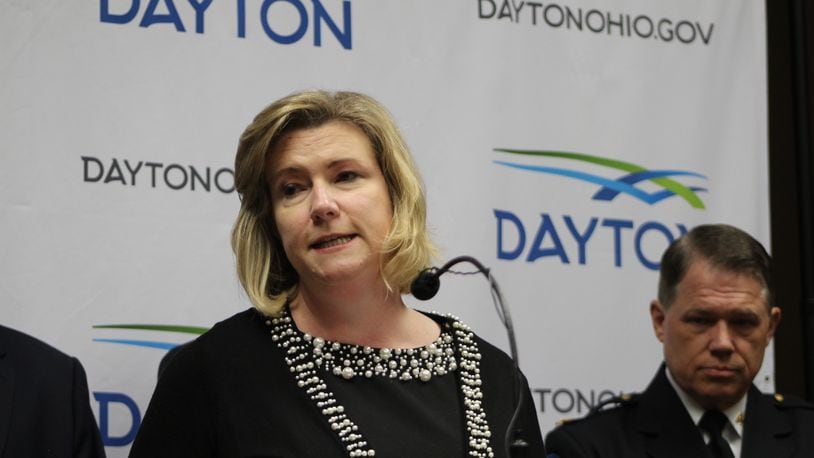Dayton becomes the first city in Ohio to file a suit against drug makers and distributors for their alleged role in the drug crisis, though the city of Lorain is expected to sue, and Ohio Attorney General Mike DeWine already has filed a civil action against five companies.
Here are some of the highlights from Dayton’s lawsuit and some other important facts to know:
1. THE COMPLAINT: The city of Dayton claims drug companies and distributors engaged in an industry-wide campaign to mislead the public and consumers about the risks and benefits of opiate medications, similar to how cigarette manufacturers for years tried to conceal the health dangers of smoking. The city accuses companies of using highly deceptive advertisements and marketing to convince the public and prescribers that opiate drugs could treat a wide range of medical issues with limited risk of dependence.
The city also accuses drug companies of making claims about their products that have no scientific evidence to support (improving patients’ function and quality of life) or omitting important information (the lack of studies about prolonged use of opioids).
RELATED: Dayton sues drug makers for overdose, addiction epidemic
2. THE COSTS: The city of Dayton said it has been required to spend millions of dollars each year to combat "the public nuisance" of opiate addiction created by the drug companies and distributors.
Costs to the city include law enforcement, services for families and children, public assistance and lost productivity, according to the lawsuit. The city has increased spending on programs to address and reduce drug abuse.
RELATED: Potent drugs raise stakes in Ohio’s fight against opioids
3. TROUBLING NUMBERS: Americans represent less than 5 percent of the global population but consume 80 percent of the opioids worldwide, the lawsuit states. Dayton police, fire and EMS personnel this year have responded to more than 1,800 calls for service related to suspected drug overdoses, which is on track to double last year's total.
First responders have administered more than 7,600 milligrams of Narcan this year, which is already 50 percent more than they used in 2016. Montgomery County has already had more fatal drug overdoses this year than in 2016, which was a record-breaking year.
Opioid overdose deaths in Montgomery County, 2016
RELATED: City, county set new fatal overdose record — by June
4. OTHER LAWSUITS: Ohio Attorney General Mike DeWine last week announced that the state is suing five pharmaceutical companies for fraudulent marketing. DeWine said the drug manufacturers deceived prescribers by falsely claiming that opioids are not addictive, addiction is easy to overcome and drug dependence can be treated with more opioids.
The city of Lorain also plans to file a lawsuit against drug manufacturers to “pursue justice” for Ohio communities ravaged by opiate addiction, officials said. DeWine and Whaley are both running for Ohio governor in 2018 and have made battling opiates a big part of their platforms.
RELATED: Ohio AG Mike DeWine sues drug companies
5. COMPANIES RESPOND: Some of the drug companies named in the city's lawsuit have denied promoting any unsafe usage of their medications. Janssen North America Pharmaceuticals Communication said more than 100 million American adults suffer from chronic pain and its opioid pain medications gives doctors and patients an option for managing pain.
» NEWS IN YOUR INBOX: Sign up for our email newsletters on the topics you love
A few companies said they are concerned about the opioid crisis and want to help combat drug addiction, but believe their products are valuable when used responsibly. Drug company Teva says it is committed to the appropriate promotion and use of opioids and has programs in place that educate prescribers, pharmacists and patients on the responsible and safe use of its products.
About the Author
